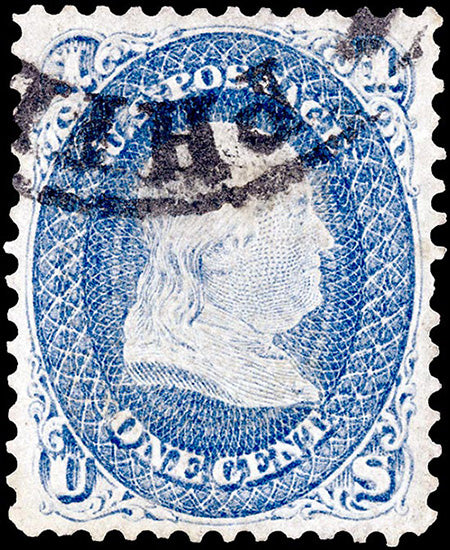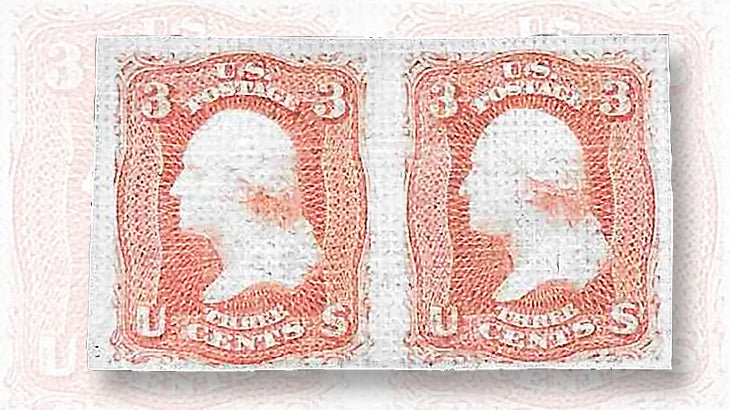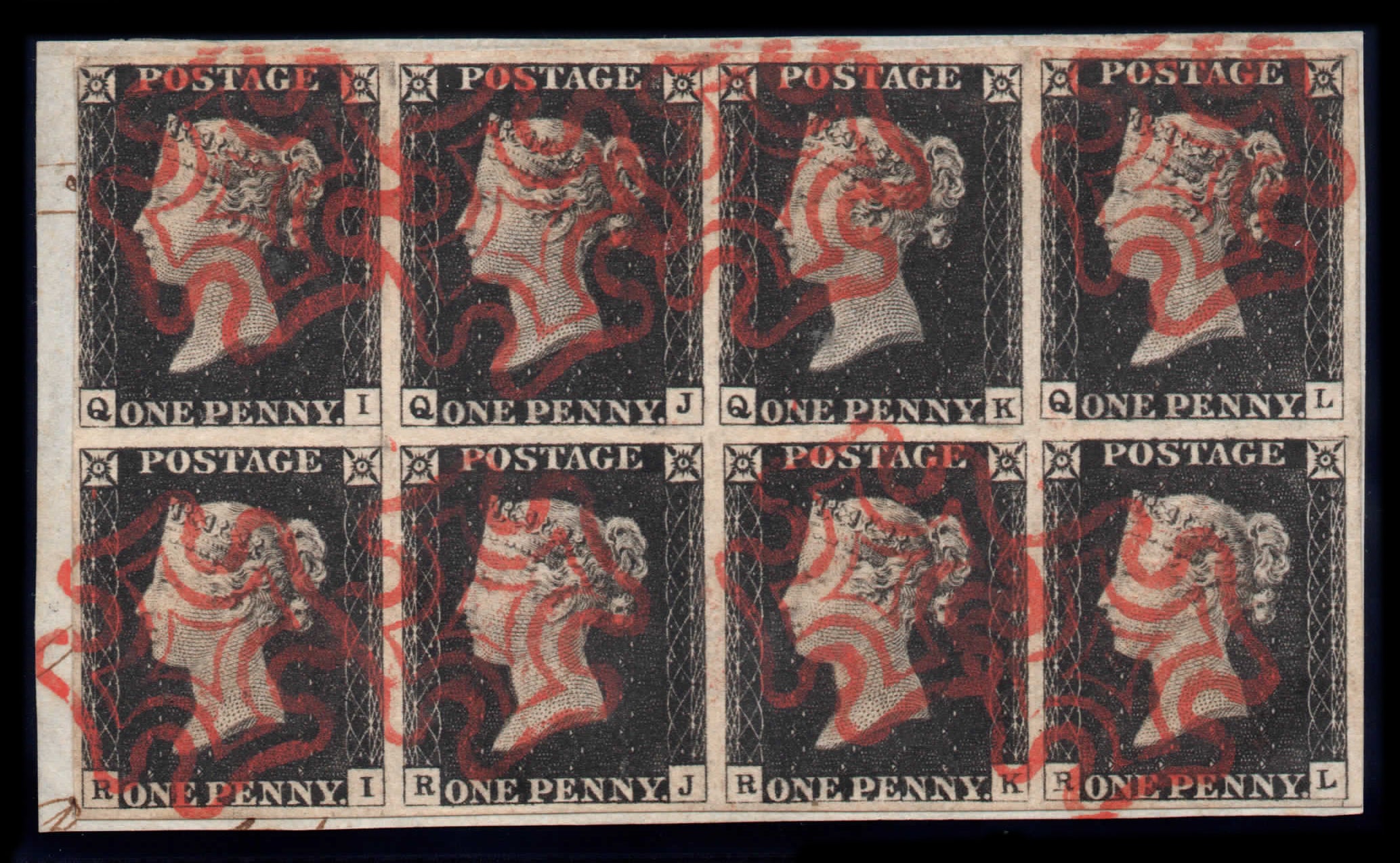In New York on June 14, 2024 at Siegel Auction Galleries bidders will battle it out for the 1-cent Z Grill Franklin of 1868.
They will almost certainly set a record for a single US stamp with their closing bid, likely to be around $5 million.
The stamp, the only one in private hands, is being sold as the crowning glory of the collection of investor William H Gross.
And it is by most standards and in most ways an extremely run-of-the-mill and standard-issue postage stamp.
Its rarity and value lies entirely in that odd sounding name.
So what is the Z Grill?

The most valuable single US stamp in the world?
Postage stamps and security
Stamps are just about the closest thing to cash that isn’t cash that a government produces.
If you have a stamp you have value.
Since the first days of the modern postal system the security of stamps has been a big issue.
We have postal marks - which philatelists call cancellations - in order to make sure stamps can’t be reused. They come in all shapes and sizes, but the simple purpose is to put a large, indelible mark over a stamp to spoil it for future use.
The cancellation stamps are easy to spot of these Penny Blacks.
Penny Blacks, the world’s first stamp, only lasted a year because authorities feared that cancellations could be obscured.
Penny Reds came in after just a year so that cancellations were more clearly visible.
Among the other methods used to protect stamps are:
- Water soluble inks that dissolved when ne’er do wells tried to wash off cancellations.
- Surface coatings that would damage the design of the stamp if it was washed with water.
- Initialing stamps to tie it to a single owner.
- Cutting stamps.
None of these have had much success or longevity.
And neither did grills, which were used by the US postal authorities from 1867.
US post offices weren’t all supplied with proper cancellation stamps.
That meant post masters would often just scribble a pen line across a stamp to cancel it.

This type of scribbled cancellation was too easy to take off.
Grills are a physical intervention designed to make cancellations stick.
They are designed to make the paper the stamp is made of more porous. The theory is that the ink from the cancellation stamp will penetrate into this paper more deeply than it otherwise would. This should make it harder to wash off the ink.
The process is fairly simple: a roller with a raised metal pattern is added to a printing press. It adds an embossed pattern of indentations to the stamp during the printing process.
These patterns had quite intricate designs and can be identified and precisely dated using those patterns.
A short-lived experiment
Grills failed.
They were used only between 1867 and 1875 on stamps.
They may have been effective in preventing washing.
But washing wasn’t really such a big problem and the cost and inconvenience of grilling (some of the grills badly affected stamp performance) wasn’t worth it.

Some early tests for grilled stamps by Charles F Steele's company.
The grill types
Grill types are lettered.
They are identified by the pattern of raised points on the grill and its size.
The grills for 1867 to 1868 were:
A, B, C, Z, E and F.
In 1869 a G grill was used.
In 1870 and 1871 the H and I grills were used on a national stamp issue.
It’s thought that no grills were used after 1875, but none of this is particularly settled history.
Name that grill
The grills can be identified as “points down” with the embossing roller being applied to the rear of the stamp and the pattern appearing to rise on the face side. Points up is the opposite.
The number of points in the grill and the direction of the ridges (only Z grills are horizontal) they form complete the identification.
A - covered the whole stamp, an experiment.
C - also experimental, 16 - 17 by 18 - 21 points, which face up. 13 by 16 mm.
Z grills - the only horizontal grill, 13 - 14 by 17 0 18 points. Points down. 11 by 14 mm.
D Grill - vertical ridges, 15 by 17–18 points. points down. 12 by 14 mm.
E Grill - vertical or X-shaped ridges, 14 by 15–17 points. Points down. 11 by 13 mm.
F Grill - vertical or X ridges. 11 - 12 by 15 - 17 points. Points down. 9 by 13 mm.
B Grill - X ridges, 22 by 18 points. Points up. 18 by 15mm.
G Grill - vertical ridges, 12 by 11 - 11.5 points. Points down. 9.5 by 9.5 mm.
H Grill - vertical ridges, 11 - 13 by 14 - 16 points. Points down. 10 by 12 mm.
I Grill - vertical ridges, 10 - 11 by 10 - 13 points. Points down. 8.5 by 10 mm.
J Grill - vertical ridges, 9 - 10 by 12 points. Points down.

Using graphite to identify a grill. A technique for experts.
Grilling was an experimental technology and these were attempts to settle on the best.
When people try to calibrate new machinery it produces uneven results. That makes identifying the grills harder.
The A grill failed comprehensively, making stamps fragile.
That’s why later grills were smaller.
Some were pushed in sheet by sheet, others through multiple sheets, which makes some of them very faint.
Identifying grills is done by touch, by measurement, and possibly by tricks with pencil lead or other chemicals.
If you think you have a grilled stamp you should be very careful. Some are very rare and valuable and trying some identification techniques - for example on unused stamps with full gum - can damage the gum.
Seek specialist advice if you are unsure.
Grill rarity
The Z grill that is about to go under the hammer in New York is commonly called the United States rarest stamp.
It may not actually be that.
Such terms are somewhat elastic. At what level of variation does a stamp become a separate issue, for example?
Catalogues have their own standards and the William H Gross collection followed the classification of the Scott catalogues that are considered the standard works for American stamps.
It will certainly be confirmed as the most valuable and perhaps that’s what matters.
It is certainly very rare. Two copies that we know of. One in New York Public Library, presumably never to be sold.
But many other grill stamps are also rare.
The experiments carried out with grills over a number of years weren’t fully documented.
There is some mystery to these numbers.
These come from the Smithsonian’s National Postal Museum. But there’s still room for debate and they omit some recently identified grill types.
A grills - prints of 50,000 3-cent stamps, 2,000 5-cent stamps, and 2,000 30-cent stamps.
B grills - four known examples of 3-cent.
C grill - 300,000 3-cent Washington stamps were printed.
D grill - print runs of 500,000 3-cent Washington stamps and 200,000 2-cent Jackson stamps.
E grill - Maybe 111,000,000 E-grill stamps were printed.
F grill - Nearly 300 million stamps of all denominations.
Z grill - Around 1,000 1-cent stamps, 500,000 2-cent stamps, 100,000 3-cent stamps, 2,000 10-cent stamps, 100,000 12-cent stamps and 1,000 15-cent stamps.

A 5-cent Jefferson with grill.
There are other grills that have only recently been discovered or recognised as separate patterns, the I and J grills.
The rarest grill stamps are thought to be:
1 known copy of the 30-cent I grill
2 known copies of the: 1-cent Z grill, 15-cent Zgrill, 12-cent I grill
3 known copies of the 90-cent I grill
4 known copies of the 3-cent B grill and the 5-cent A grill
6 known copies of the 10-cent Z grill
8 known copies of the 30-cent A grill
There could be more grilled stamps out there waiting to be discovered.
In fact, it’s extremely likely that they exist and extremely unlikely they’ll ever be picked out by someone who knows what they are.
Fake grills
You can imagine that it’s very tempting to carry out the relatively simple procedure needed to add a grill to a stamp.
There are quite a lot of fake grills out there.
The measurements and quality of the indentations are said by experts to be the best way to spot fakes, using a reference copy if you have one.
Multiple grills
Stamp errors are beloved of collectors.
For grills, they arise when paper wasn’t properly aligned so that grills are split between two stamps or multiple grills somehow get pushed into a single stamp.
These are more valuable to some buyers.
Buying rare American stamps
The grills are an area of evolving study.
And very specialist.
If you’re unsure about grill stamps you should seek out expert advice as soon as you can.
We have stamp experts on staff, and we have a wonderful selection of rare stamps here.







